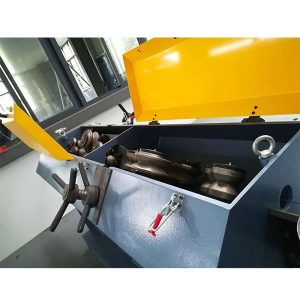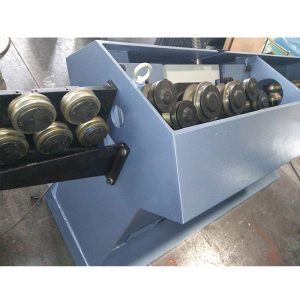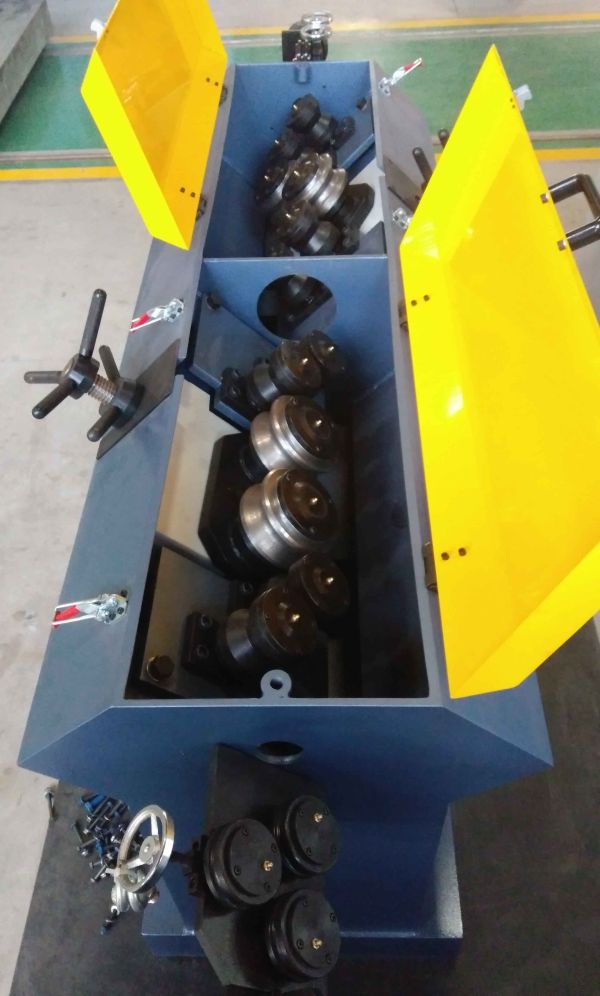Sanding Belt descaling Machine
Benefits of Using Sanding Belts for Grinding Machines
Sand Belt Grinding Descaler is an essential tool for grinding machines, providing a smooth and efficient way to grind various materials. These belts are made of abrasive materials that are coated onto a flexible backing, allowing them to conform to the shape of the workpiece and provide a consistent finish. There are many benefits to using sanding belts for grinding machines, including increased productivity, improved surface finish, and reduced operator fatigue.
One of the main benefits of using sanding belts for grinding machines is the increase in productivity. These belts are designed to remove material quickly and efficiently, allowing operators to complete their work in less time. This can be especially beneficial in industries where time is of the essence, such as manufacturing or construction. By using sanding belts, operators can complete their tasks more quickly and move on to the next job, increasing overall productivity.

In addition to increased productivity, sanding belts also provide a superior surface finish compared to other grinding methods. The abrasive materials on the belts are designed to cut through material evenly, leaving a smooth and consistent finish. This is important in industries where the appearance of the finished product is crucial, such as woodworking or metal fabrication. By using sanding belts, operators can achieve a high-quality finish that meets their standards and the standards of their customers.
Another benefit of using sanding belts machines is the reduction in operator fatigue. Grinding can be a physically demanding task, requiring operators to hold the machine steady and apply pressure to the workpiece. This can lead to fatigue and discomfort over time, making it difficult for operators to maintain a high level of productivity. Sanding belts help to alleviate this issue by providing a smooth and consistent grinding surface that requires less effort to operate. This can help to reduce operator fatigue and improve overall comfort during long grinding sessions.
Furthermore, sanding belts are versatile tools that can be used on a wide range of materials, including wood, metal, and plastic. This makes them ideal for a variety of industries and applications, from woodworking to automotive manufacturing. By using sanding belts, operators can achieve a high-quality finish on a variety of materials without the need for multiple grinding tools. This can help to streamline the grinding process and reduce the need for additional equipment, saving time and money in the long run.
Overall, sanding belts are a valuable tool for grinding machines, providing a range of benefits that can improve productivity, surface finish, and operator comfort. By using sanding belts, operators can achieve a high-quality finish on a variety of materials in less time and with less effort. This makes them an essential tool for any industry that requires precision grinding and finishing.
How to Choose the Right Sanding Belt for Your Grinding Machine
When it comes to choosing the right sanding belt for your Mechanical Wire Descaler, there are several factors to consider in order to achieve the best results. Sanding belts are essential tools for smoothing and shaping various materials, such as wood, metal, and plastic. They come in a variety of sizes, grits, and materials, each designed for specific applications. In this article, we will discuss how to choose the right sanding belt for your grinding machine to ensure optimal performance and efficiency.

One of the most important factors to consider when selecting a sanding belt is the grit size. Grit size refers to the coarseness or fineness of the abrasive particles on the belt. The higher the grit number, the finer the abrasive particles, which results in a smoother finish. Lower grit numbers are more aggressive and are suitable for heavy material removal. It is essential to choose the right grit size based on the material you are working with and the desired finish.
Another crucial factor to consider is the material of the sanding belt. Sanding belts are typically made from materials such as aluminum oxide, zirconia alumina, ceramic, and silicon carbide. Each material has its own unique properties and is suitable for specific applications. For example, aluminum oxide is a versatile material that is suitable for general-purpose sanding, while zirconia alumina is more durable and long-lasting, making it ideal for heavy-duty applications.
In addition to grit size and material, it is important to consider the backing of the sanding belt. Backing materials can vary from cloth to paper to polyester, each offering different levels of flexibility and durability. Cloth-backed sanding belts are more durable and tear-resistant, making them suitable for heavy material removal. Paper-backed sanding belts are more flexible and conformable, making them ideal for contour sanding.
When choosing a sanding belt for your grinding machine, it is also important to consider the size of the belt. Sanding belts come in a variety of sizes, ranging from narrow belts for precision work to wide belts for larger surface areas. It is essential to choose the right size based on the size of your grinding machine and the area you need to sand.
Furthermore, it is crucial to consider the type of grinding machine you are using when selecting a sanding belt. Different grinding machines have different requirements in terms of belt size, speed, and compatibility. It is important to choose a sanding belt that is compatible with your specific grinding machine to ensure optimal performance and safety.
In conclusion, choosing the right sanding belt for your grinding machine is essential for achieving the best results. By considering factors such as grit size, material, backing, size, and machine compatibility, you can select a sanding belt that meets your specific needs and requirements. Whether you are working with wood, metal, or plastic, choosing the right sanding belt will help you achieve a smooth finish and efficient material removal.





